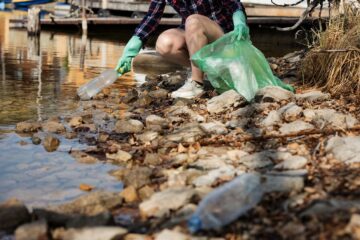![]()
Introduction:
Coronavirus disease (COVID-19) is a highly infectious disease caused by a newly discovered coronavirus called COVID-19 which allegedly originated in Wuhan city of China and has thrown life and economy into a sort of tsunami.
It has been reported that most people when infected with the said virus witness symptoms ranging from mild to moderate respiratory discomfort and mostly recover without any special treatment. However, people who are old, and those with co-morbidities like cardiovascular disease, diabetes, chronic respiratory disease, and cancer, etc. face many grave consequences. This has compounded in the second wave wherein more and more are getting infected in India.
The virus which causes the disease is mainly transmitted through the droplets called aerosols which are generated when an infected person coughs, sneezes, or exhales. These aerosols are heavy and therefore do not float in the air, and fall on floors or surfaces after traversing some distance in the air. One is likely to be infected by breathing in such contaminated air if one is within proximity of an infected person, or by touching such contaminated surfaces.
The Pandemic
The year 2020 was an unprecedented challenge of a sudden outbreak of COVID-19 which affected humanity as a whole. The outbreak is a clear reminder that humans, animals, plants & environmental health, and their wellbeing are deeply connected and get affected by each other activities. Environment and human health are deeply endangered and this calls for an all-inclusive sustainable approach to all the spheres of life on the earth. It has been reported that around 75% of emerging diseases are zoonotic meaning thereby that they originated from animals either wild or domesticated and thereafter transmitted to humans.
The medical journals state that Coronavirus is a large family of viruses that cause coughs, sneezes, or exhales, which can cause death for a person with co-morbidities such as cardiovascular problems, diabetes, chronic respiratory ailments, and cancer, etc. The first reported case in the world was from Wuhan city, China, and the first reported case in India on 27th January 2020 to a 20-year-old female in the general hospital Thrissur, Kerala who had returned from Wuhan, China.
A small virus has not only impacted and dented the national and international economies but has also crippled the health care infrastructure systems even of the most powerful and developed economies. On the other hand, our country has a humongous population of more than 1,392 million and about 17.7% of the total world population with multiple and complex state-regional-local-geographical-political-rural-urban, etc. adds to the multiplier effect to this health pandemic.
Existing Statutory & Regulatory Regime
The present scenario of environmental regulations in India is critical as it has to take into account not only the threats emanating from environmental degradation and climate change issues but also the multiple chain effects which this health pandemic has on already stressed ecosystems, humans, social wellbeing, and economy.
As per the definition of environment in Environment (Protection) Act, 1986 hereinafter called EP Act ‘environment includes water, air, and land and their inter-relationship which exists among and between water, air and land, and human beings, other living creatures, plants, micro-organism, and property’. Further, rules framed under Environment (Protection) Act, 1986 viz. Bio-Medical Waste Management Rules, 2016, Solid Waste Management, and Plastic Waste Management Rules, 2016 attend to the subject-specific environmental issues. Further, the scope of the Water (Prevention and Control of Pollution) Act, 1974 and provision contained therein includes the liquid waste arising from covid facilities and Health Care Facilities.
In the current scenario, the scope of the Epidemic Act of India, 1897 is more towards prevention of the spread of the disease rather than to curb or eradicate it. Further, the Act does not define the term ‘epidemic’ and in my considered opinion due to its limitation, it would not be appropriate to use this in the current ‘pandemic’ situation which needs more comprehensive and inclusive handling.
Therefore, handling this issue and issuing directions and advisories to all states and the union territories in this regard under the provisions of the Disaster Management Act, 2005 is more correct. Further, WHO has declared COVID-19 as a pandemic. Subsequently, various notifications under the said act were issued by NDMA to contain the spread of COVID-19 in the country.
While attending the current pandemic and to ensure the safe disposal of bio-medical waste arising out of the handling of this disease and also given potential of such infectious waste adversely affecting public health, concerned workers and professionals, etc. under the Environment (Protection) Act, 1986 various rules as stated above have been notified. The Bio-Medical Management Waste Rules, 2016 in particular deals with the disposal of bio-medical waste arising out of the handling of COVID-19 disease.
COVID Waste Management & Disposal
Considering that the virus spreads mainly by airborne droplets and also by the touch of contaminated articles, therefore, to prevent its spread, the lockdown and norms of social distancing have been enforced, restricting people to their homes, to prevent social contact. As a part of the strategy, affected persons are treated in hospitals, and those suspected are quarantined in various facilities or at home. Large-scale testing is being done by the authorities and the masks, gloves, PPE, etc. used by the health care workers need to be disposed of in a scientific and environmentally safe manner. In the process of treatment, a huge quantum of bio-medical waste is generated which has thrown a new challenge. This covid waste likely gets mixed with the larger quantum of municipal solid waste due to inappropriate handling resulting in greater volumes of waste. The current rules on biomedical waste have provisions only to deal with waste generated in dealing with infectious diseases such as HIV, HINI, etc.
The National Green Tribunal Order
The doctors and health professionals use gloves and PPE kits which need to be disposed of in all Health Care Facilities (HCF) all around the country in a manner that doesn’t affect/pollute our already stressed ecosystems. In this regard, the Central Pollution Control Board has all-ready-made detailed guidelines viz. ‘Guidelines for Handling, Treatment, and Disposal of Waste Generated during Treatment/ Diagnosis/ Quarantine of COVID-19 Patients’ which on the directions of the National Green Tribunal, New Delhi in O.A. 72/2020 were revised as the NGT took Suo-Moto cognizance of the news item in the Indian Express dated 19.04.2020 titled as ‘Biomedical waste facilities, a red flag in coronavirus fight’ authored by Apurva Vishwanath and Karishma Mehrotra.
The NGT in its order referred to above directed that the disposal of bio-medical waste arising out of the handling of COVID-19 needs to be done in a manner to ensure the protection of the environment and health of the masses. The Tribunal held that there is a need for revision of said guidelines from time to time given new challenges facing us so that all aspects of scientific disposal of liquid and solid waste management are taken care of not only at the institution level but also at individual levels. The NGT order emphasizes the need for safe disposal of used PPEs, used bags, gloves, goggles so that it does not get mixed with other municipal solid waste causing contamination. The Tribunal also stressed reviewing the effectiveness of the monitoring mechanism, including securing information by way of the electronic manifest system from the handlers of such waste and its online reporting by the authorities daily, creating awareness by special awareness programmers, organizing training in concerned Local Bodies, Health Departments. The NGT order emphasized the need for providing workers handling COVID-19 waste with adequate protective gear, adequate coordination with media and other concerned regulatory authorities.
The Tribunal also held that there is also a need for creating awareness about the precautions and steps to be taken by all handlers and workers as well as citizens besides making a model plan to be adopted at all levels with such further changes as may be necessary to suit the local conditions. It also states that the health of all operators has to be protected and preventive measures are taken. Besides, it emphasizes the need for orientation/training of persons responsible for compliance in the Local Bodies and Health departments and by providing them with adequate protective gear. It states that the central regulator has to take lead in this matter.
The COVID Waste Guidelines
Later on, CPCB issued guidelines which were last updated on 08.04.2020. The updated guidelines viz. ‘Guidelines for Handling, Treatment, and Disposal of Waste Generated during Treatment /Diagnosis/Quarantine of COVID-19 patients’ during diagnostics and treatment of COVID-19 suspected/confirmed patients, are required to be followed by all the stakeholders such as isolation wards, quarantine centers, sample collection centers, laboratories, ULBs and Common Biomedical Waste Treatment and Disposal Facilities (CBWTDF), in addition to the existing practices under the rules.
The Second Wave
COVID-19 second wave in the current year 2021 is far more dangerous/lethal as its new variants titled COVID-alpha and delta etc. pose a greater challenge in terms of mortality to humans and also the environment as compared to the first wave last year. The current situation demonstrates that in the first wave when the numbers were few and so was the quantum of waste, the assessment of compliance to NGT directions to the national and state governments now need to be undertaken in order to consolidate the learnings and gaps attended while dealing with the current second wave. There is a need to have a more robust monitoring mechanism to deal with associated challenges with regard to the environment, health, economic and social milieu. It is feared that given the huge gaps in Covid waste generated, managed, and disposed of and the lapses noticed, there is all likelihood of the creation of a multitude of Covid situations in the times to come.
Further, the disposal of dead bodies of Covid patients numbering in thousands in the River Ganga has posed a new threat all along the Indo-Gangetic Plains which is the lifeline of our nation. It is felt that the national and state-level task force which have been constituted by the government must not only monitor the disease and its containment but also the highly infectious covid waste generated in huge quantities, failing which many more precious lives would be lost.
Conclusion
COVID-19 has posed multiple threats not only to the environment which is already under stress but also to the economic and social security of our country. Exposure to covid-19 turns out to be an eye-opener for India to rethink and redesign its ‘The National Policy’ to focus on the impacts of a pandemic on the community, health, livelihoods, and overall economy of the nation. It is indeed a wake-up call before we perish as humanity and also an opportunity to follow the tenets of sustainable development and inclusive growth.



0 Comments